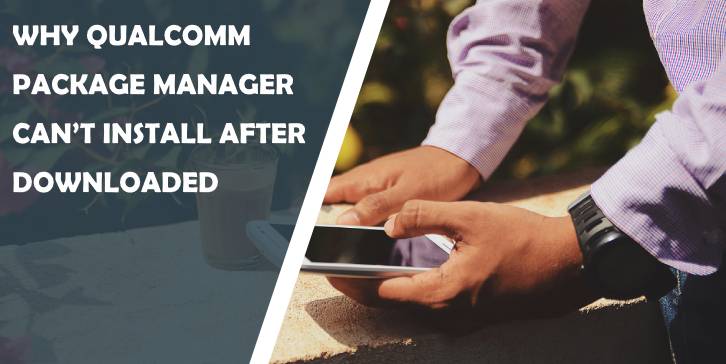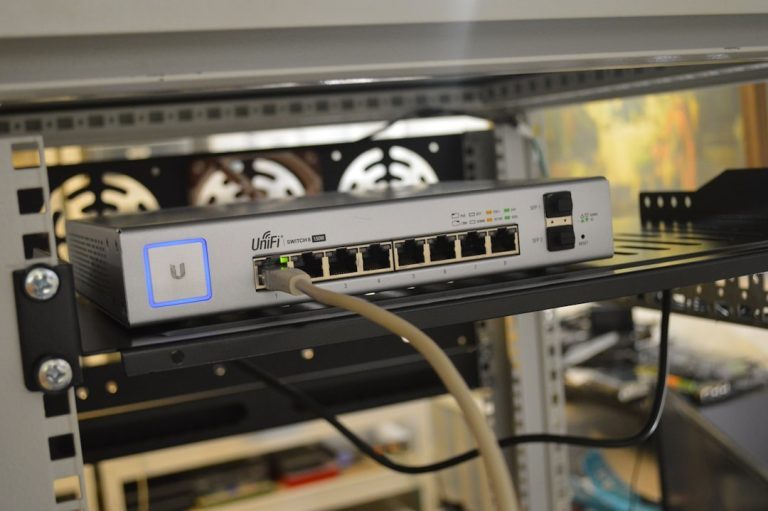Imagine eagerly anticipating the latest app that promises to elevate your smartphone experience, only to face an unexpected roadblock: “Qualcomm Package Manager can’t install after downloaded.” This common frustration can feel like a digital déjà vu, leaving many users scratching their heads in confusion. With smartphones becoming increasingly central to our daily lives, encountering installation issues can be not just annoying but also detrimental to productivity and enjoyment.
In this article, we’ll delve into the intricacies of Qualcomm’s package management system—unpacking what it is, why these errors occur, and how you can troubleshoot them effectively. Whether you’re a tech-savvy enthusiast or someone who simply wants their device running smoothly, understanding the underlying causes of these installation hiccups will empower you to reclaim control over your device. Join us as we navigate through potential pitfalls and solutions that will help restore seamless functionality to your Qualcomm-powered devices!
Common Installation Errors Explained
One of the most frustrating issues users encounter when attempting to install packages with Qualcomm Package Manager is encountering installation errors. A common error arises from dependency conflicts, where the required software version doesn’t match what’s currently installed on your device. This can lead to a cascade of failed installations, leaving even seasoned developers scratching their heads. A simple solution is double-checking the specific versions needed and ensuring that older or conflicting packages are updated or removed to clear the way for your new installation.
Another frequently overlooked aspect is ensuring adequate storage space on your device. While it might seem trivial, a lack of sufficient memory can halt an installation in its tracks and produce vague error messages that leave you guessing at the root cause. Users often forget that both the package being installed and temporary files generated during installation need space. Regularly cleaning up unnecessary files or using external storage options can help alleviate this problem.
Lastly, network connectivity issues can also disrupt package installations without much warning. Since downloads often require stable internet access, intermittent connections or inadequate bandwidth could be culprits behind incomplete installations. Before diving into complex troubleshooting methods, take a moment to assess your network’s reliability—sometimes a simple reset of your router may resolve what appears to be an intricate software issue! Recognizing these common errors not only empowers users but also enhances overall efficiency when working with Qualcomm Package Manager.

System Requirements for Qualcomm Package Manager
Before diving into troubleshooting issues with the Qualcomm Package Manager, it’s crucial to ensure your system meets the necessary requirements. This software isn’t just a simple installation; it demands a compatible environment to function correctly. Minimum operating specifications often include specific Windows versions, adequate RAM, and a recommended amount of free disk space. Overlooking these parameters can lead to frustration when the package manager fails to install despite having downloaded it successfully.
Moreover, consider hardware compatibility as well. Systems powered by certain Qualcomm chipsets may benefit from optimized performance when using the Package Manager, while others could experience errors due to driver mismatches or outdated firmware. Always check for updates not just for the Package Manager itself but also for your device’s operating system and drivers—these can significantly impact functionality. Taking meticulous care of these requirements lays a solid foundation for smooth installation and operation, turning what could be an arduous task into a seamless experience.
Checking Compatibility with Your Device
When faced with issues related to the Qualcomm Package Manager not installing after download, one of the first steps is checking compatibility with your device. Many users overlook this crucial aspect, assuming that simply downloading an application guarantees it will work seamlessly across devices. However, incompatibilities can stem from various factors such as software versions, hardware specifications, or even regional restrictions. For instance, a package designed for Android 10 may struggle to operate smoothly on a device running an earlier version; hence it’s essential to verify these details beforehand.
Another dimension worth exploring is manufacturer-specific modifications that can impact compatibility. Different manufacturers often implement custom user interfaces and hardware configurations, which can affect how applications function on their devices. This means that even if two phones are running the same version of an operating system, the underlying architecture might still differ significantly enough to disrupt installation. Thus, scrutinizing device specifications and firmware updates is imperative in ensuring a hassle-free installation process with Qualcomm tools—enabling you to fully harness their capabilities without unnecessary setbacks.

Steps to Troubleshoot Installation Problems
When facing installation problems with the Qualcomm Package Manager, starting with a detailed checklist can streamline your troubleshooting process. First, ensure that your device meets the minimum system requirements; sometimes, overlooked hardware limitations can impede installation efforts. Additionally, check for any ongoing background processes that could interfere—simply restarting your device can often dissolve such conflicts and pave the way for a smoother installation.
Next, delve into any error messages you encounter during the installation attempt. These messages are not just random strings of text but valuable clues indicating what might be going wrong. For instance, missing dependencies or incompatible versions may surface as specific errors that lead you to target those issues directly. Keeping your software up-to-date is also crucial: an outdated version of either the package manager or its dependencies can create a mismatch that halts progress. By taking these methodical steps and maintaining an adaptable mindset, you’ll increase your chances of resolving issues effectively and enhance your overall user experience with Qualcomm tools.
Ensuring Sufficient Storage Space Available
When facing installation issues with Qualcomm Package Manager, a common yet often overlooked culprit is insufficient storage space. It’s critical to remember that even after downloading the necessary files, your device needs adequate space not just for the files themselves but also for auxiliary operations such as unzipping and installing. Delving into this aspect can reveal unexpected insights; many users focus solely on the available megabytes or gigabytes without considering that these temporary files could balloon in size during installation, leading to an unexpected halt.
Regularly monitoring your device’s storage usage can empower you to maintain a healthier system. Tools that analyze what’s taking up space—whether it’s unused applications, cached data, or large media files—can provide clarity and help you make informed decisions about what to delete or transfer. Additionally, consider utilizing cloud storage solutions for non-essential data; this not only frees up local capacity but also enhances accessibility across devices. By preemptively ensuring sufficient storage is available before executing installations like Qualcomm Package Manager, you minimize disruption and streamline your user experience significantly.

Updating Drivers and Software Dependencies
Updating drivers and software dependencies is vital for a smooth installation process with Qualcomm Package Manager. Outdated drivers can lead to compatibility issues, causing installation failures or erratic performance. Just as your physical machinery requires occasional lubrication and maintenance, software needs regular updates to function optimally. By ensuring your system is equipped with the latest drivers, you’re not just improving compatibility; you’re also enhancing overall performance and security.
Moreover, neglected software dependencies can create a domino effect of problems that prevent successful installations. Think of these dependencies as the essential building blocks that support the functionality of Qualcomm Package Manager; if any block is missing or outdated, the entire structure may collapse. Regularly reviewing these components not only streamlines installations but also empowers users by providing them with smoother experiences across various applications. Engaging in this proactive approach transforms potential headaches into opportunities for innovation and efficiency in daily tech usage.
Conclusion: Resolving Installation Challenges Efficiently
In navigating the intricacies of installation challenges with Qualcomm Package Manager, efficient resolution often hinges on a proactive mindset. Instead of viewing installation issues as mere roadblocks, approach them as opportunities for deeper understanding and improvement in your technical skills. A systematic method—starting from verifying file integrity to checking system compatibility—can streamline your troubleshooting process. Engaging with community forums or official support can not only provide quick solutions but also foster a collaborative environment where users share innovative fixes.
Moreover, it’s essential to keep your software environment updated. Regularly managing updates for both the Package Manager and your operating system minimizes compatibility issues that might arise during installations. Embracing automation tools to periodically clean up unnecessary files can also enhance performance and reduce conflicts that lead to installation failures. Remember, each challenge surmounted is a step towards becoming more adept in managing software installations, ultimately enhancing your overall workflow efficiency.




